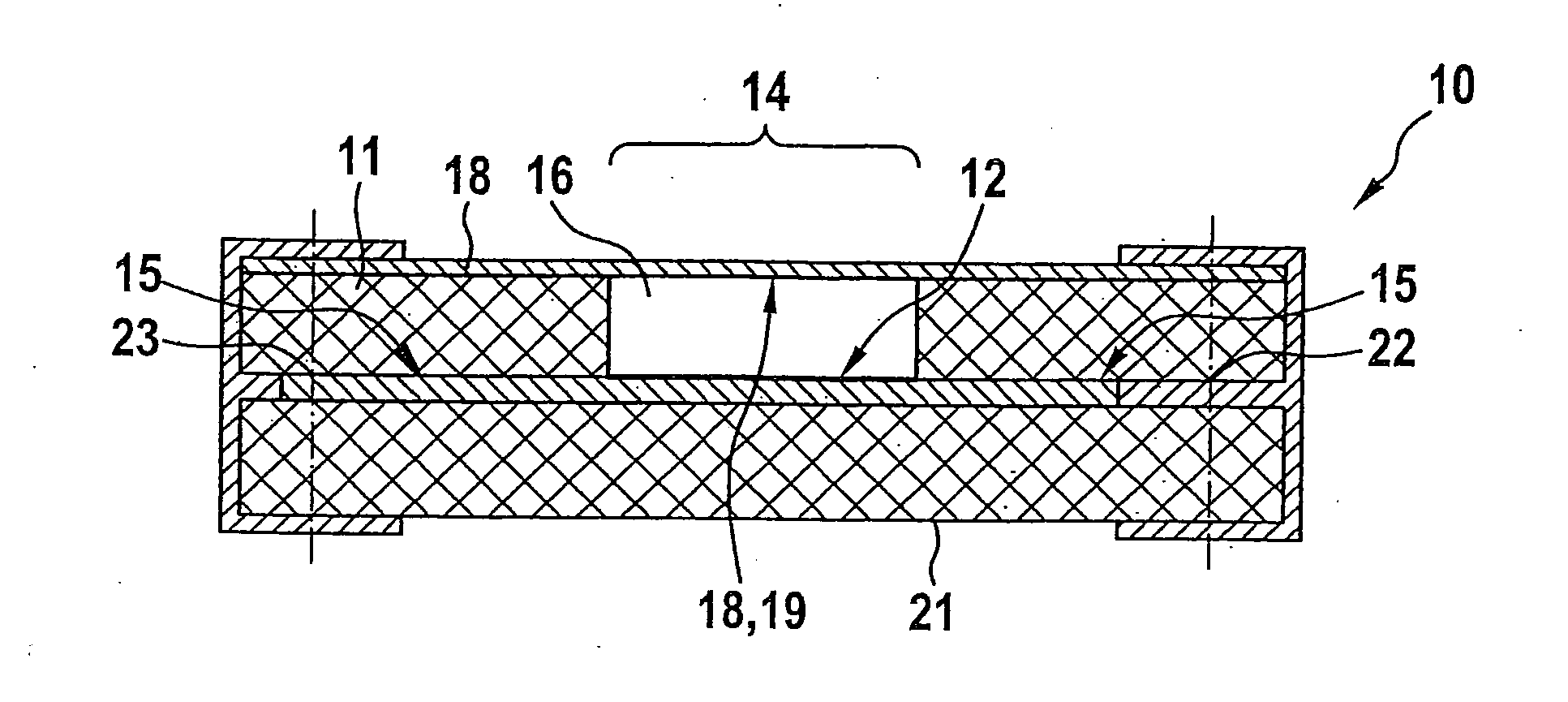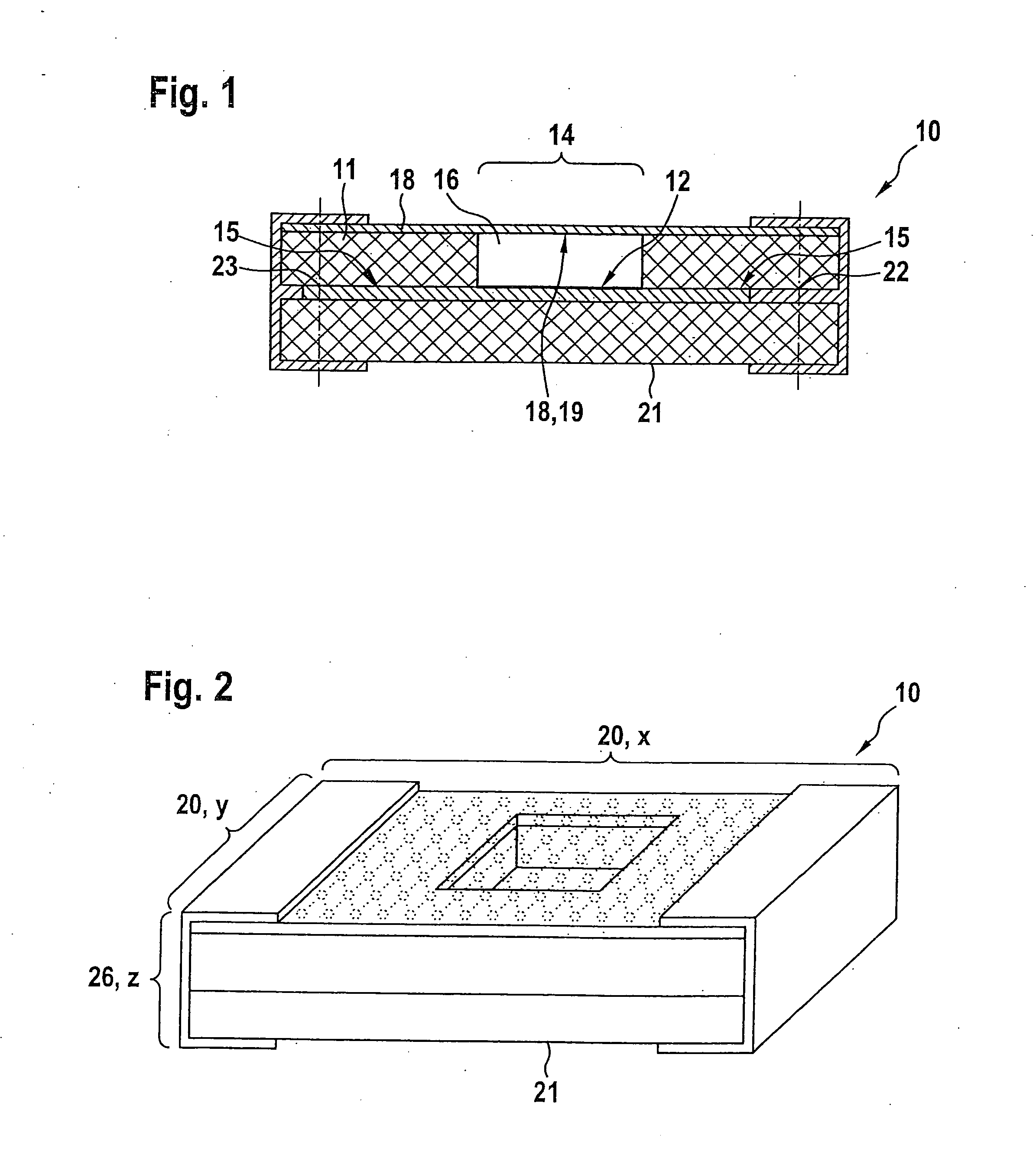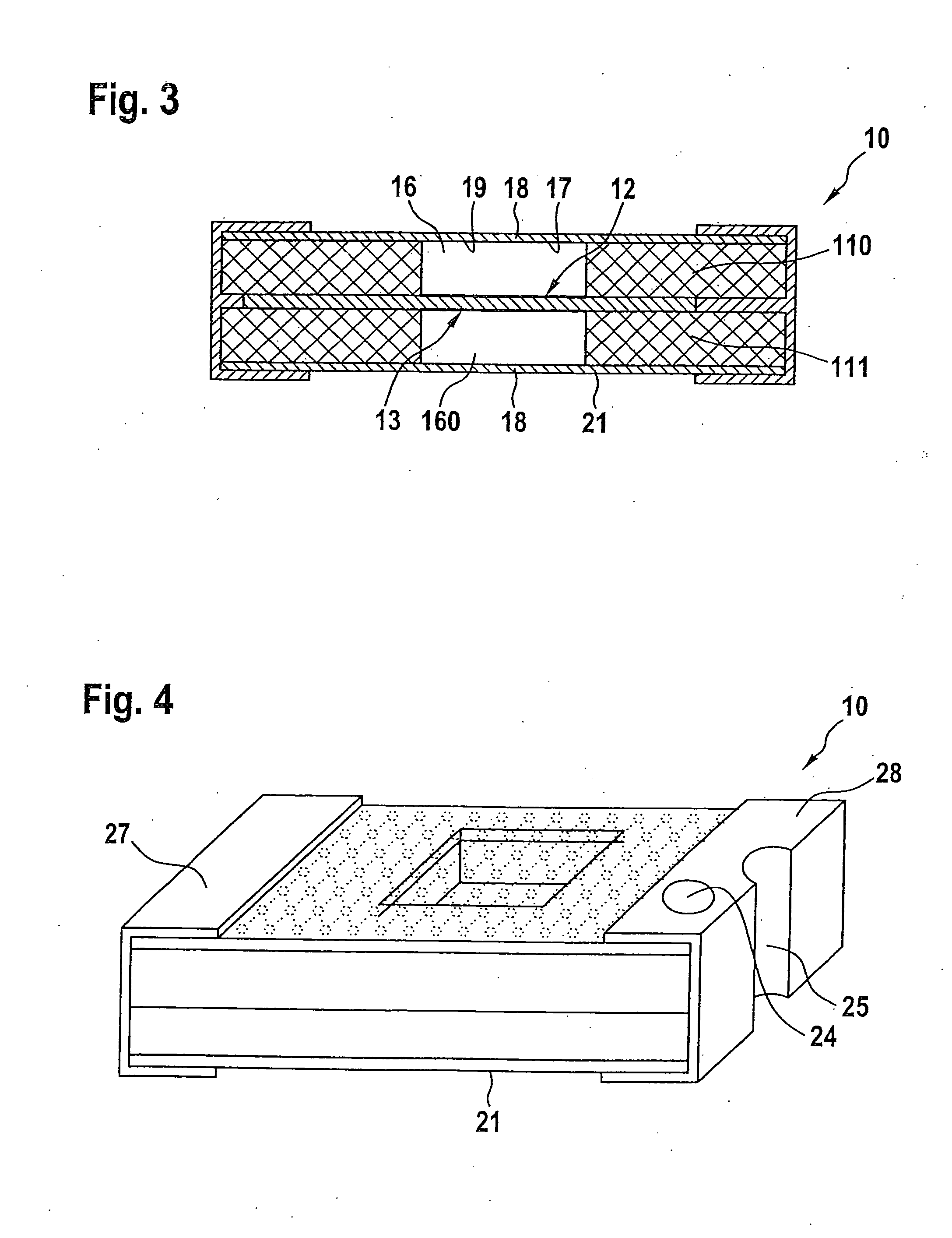Fuse element
a technology of fuse element and element, applied in the field of fuse element, can solve the problems of material loss, different temperature expansion coefficient, material material damage, etc., and achieve the effect of preventing inflammation
- Summary
- Abstract
- Description
- Claims
- Application Information
AI Technical Summary
Benefits of technology
Problems solved by technology
Method used
Image
Examples
first embodiment
[0037]First, to the views in FIGS. 1 and 2 will be discussed, in which a fuse element 10 of the invention is shown.
[0038]FIGS. 1 and 2 pertain to the fuse element 10, in which the fuse 12 of the invention is provided on a printed circuit board substrate or printed circuit board substrate material 11. The fuse 12 is provided on the printed circuit board substrate 11, which is coated in a known manner with a metal or metal alloy 12 by a coating procedure, and the fuse 12 is generated by means of photolithographic and / or printing image-producing techniques, such as screen printing, and ensuing etching or engraving processes, as is generally done to make printed circuit boards with conductor tracks that are to be provided on the printed circuit boards. Both conventionally constructed printed circuit board substrates with one- and / or two-sided coating with metal or metal alloys and the known printed circuit board substrates that are formed by the multilayer technology or used for it, are...
second embodiment
[0042]In the vicinity of the fuse 12, the printed circuit board substrate 11, and this applies equally to the printed circuit board substrates 110, 111 that will be described below in conjunction with the fuse element shown in FIGS. 3 and 4, through-holes not shown here can be formed, which can be created for instance by means of laser devices, by means of which the characteristic time-current curve of the fuse 12 can be designed as faster-acting or slower-acting, and the current-time integral can also be varied by means of this provision. It is equally possible for the metal or metal alloy that forms the melting part of the fuse to have a plurality of such through-holes, so that by that means as well, either alternatively or in addition, it is possible to vary the aforementioned parameters. The void 16 and / or the void 16, 160 of the embodiment of the fuse element 10 of FIGS. 3 and 4 can be filled at least in part by an insulating means, not shown here; this insulating means can for...
PUM
| Property | Measurement | Unit |
|---|---|---|
| temperatures | aaaaa | aaaaa |
| operating temperatures | aaaaa | aaaaa |
| temperature | aaaaa | aaaaa |
Abstract
Description
Claims
Application Information
 Login to View More
Login to View More - R&D
- Intellectual Property
- Life Sciences
- Materials
- Tech Scout
- Unparalleled Data Quality
- Higher Quality Content
- 60% Fewer Hallucinations
Browse by: Latest US Patents, China's latest patents, Technical Efficacy Thesaurus, Application Domain, Technology Topic, Popular Technical Reports.
© 2025 PatSnap. All rights reserved.Legal|Privacy policy|Modern Slavery Act Transparency Statement|Sitemap|About US| Contact US: help@patsnap.com



